- Category
- War in Ukraine
A Day with Ukrainian Drone Unit Hunting Russian Troops in Pokrovsk
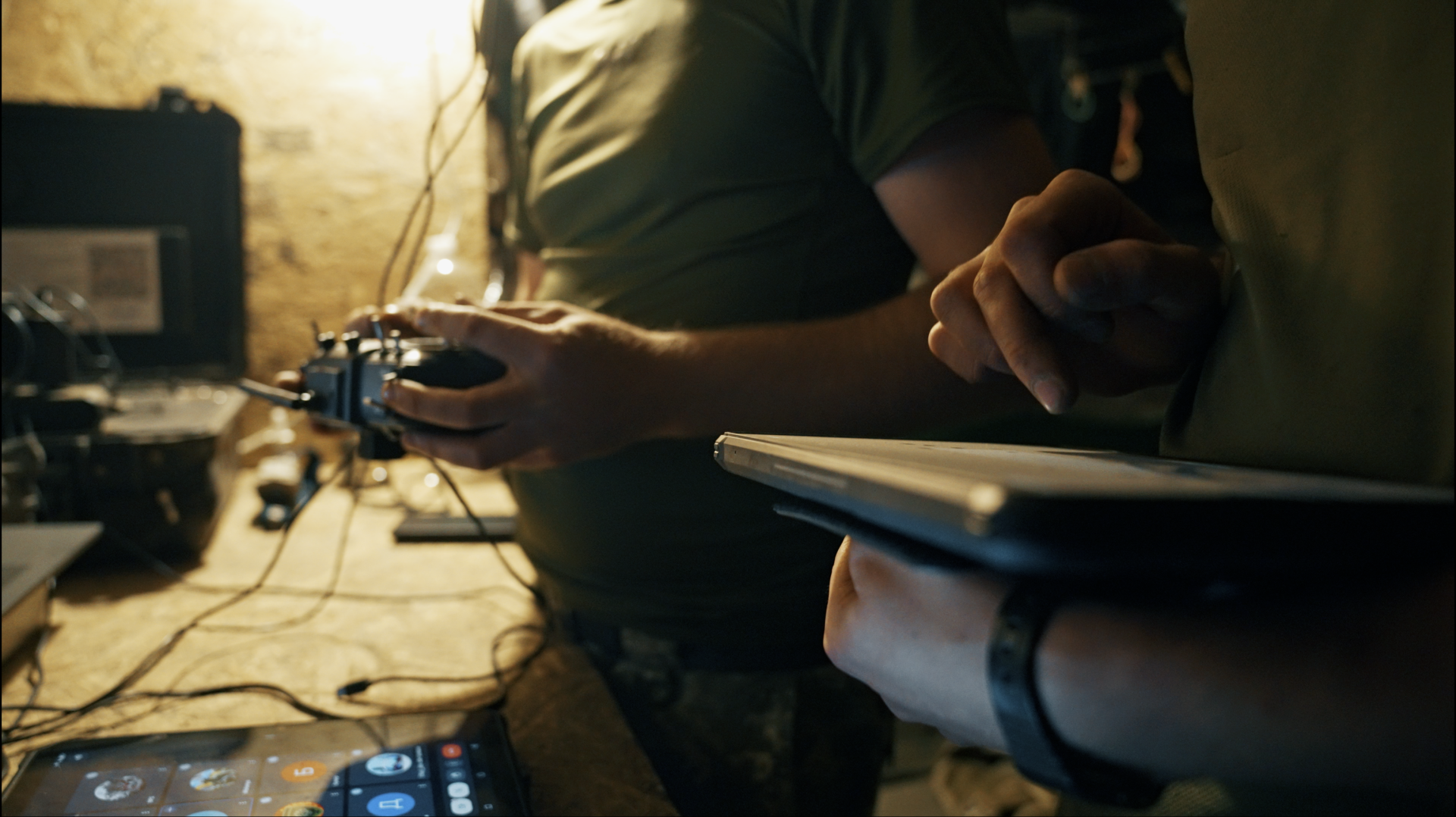
Cheap to build and deadly, First Person View (FPV) drones have become a fixture in this war, and the Pokrovsk frontline is no exception. For two brothers from Kherson—call signs “Stary” and “Google”—hunting Russian invaders is a family business.
We embedded with the Ukrainian Armed Forces’ 110th Mechanized Brigade unit for a night and day-long mission, working alongside their “eyes in the sky”—FPV drones—under heavy artillery fire just a few kilometers from the Russian positions.
Road of hell
It’s 2 a.m. EET, and we’re in Pokrovsk, the Donetsk region, getting ready to meet the soldiers from the 110th Brigade’s drone unit. We must move fast to reach their positions and operate under the cover of darkness to avoid being spotted by the Russians.
For safety reasons, the exact location will stay secret. We drive in the dark with dimmed headlights. It’s way past curfew, and the only vehicles on the road are military ones.
After a few minutes, the lights of a massive military car blind us. We jump from our vehicle to meet the soldiers—“Stary,” “Google,” and “Samurai”—from the 110th Brigade. They’re the units’ eyes in the sky. Greetings are brief—just enough time to put on some blue tape, take a quick drag on a cigarette, and we’re on our way. The drone pilots have no time to waste.
We’re heading to the car with the guys. Our destination is near the Russian positions, so we’ll be getting pretty close to the frontline.
“Samurai” warns us about the road. “It’s 100% dangerous,” he says. “There are FPVs on this road, and artillery as well. In short; getting there is the most dangerous part.”
After a long hour, the car suddenly turns and enters a field—probably mined. A fire flickers ahead of us; this is where we’re heading.
The familiar silhouette of trenches scars the surrounding fields. Fortifications are underway here—we’re getting closer to the position. We’re completely exposed, and the Russians can easily spot us with thermal cameras.
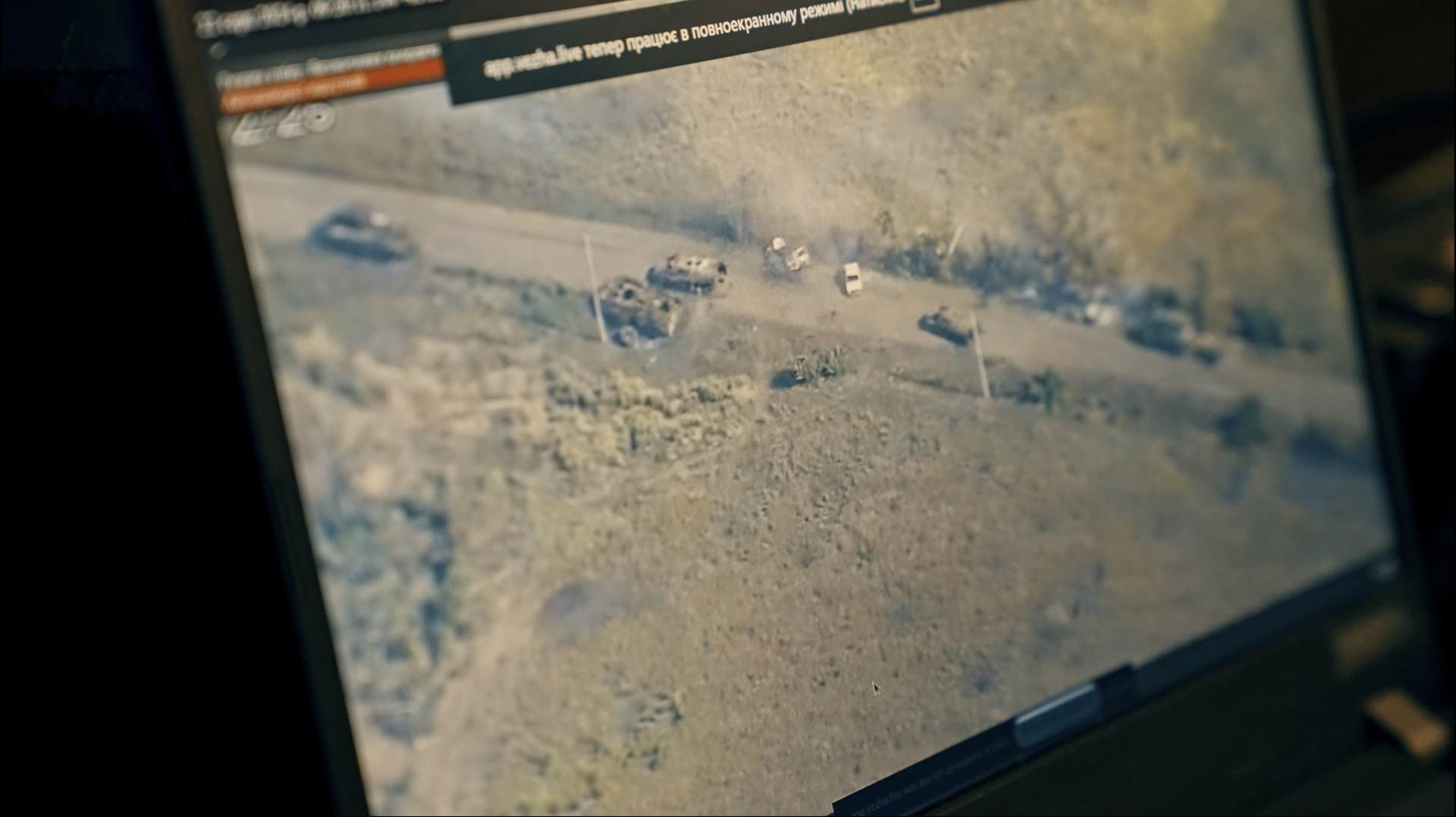
The art of stealth
As we arrive at the position, the unit slowly gets ready. It’s swift and efficient. The arrival has to be silent. The atmosphere is a bit tense, and the lights off add to the feeling of secrecy surrounding the place.
“Stary” is focused. He prepares the station with the impressive dexterity of someone who has done this a thousand times before.
The hide-out is clean and spartan. A few cans of energy drinks and some snacks—this is all they’ll have today. There won’t be any trip out of the position to replenish food supplies; we’re stuck here until the next sunset.
Meanwhile, “Stary” unloads the screen and the joysticks to pilot the deadly drones, with the hope of hitting some targets today. Outside, “Samurai” takes care of the FPVs in the dark. He straps an explosive charge to each of them.
There’s a problem: the zip ties don’t fit, and the explosives aren’t secured tightly enough on the drones, risking them falling off during the first flight. Not great. “Samurai,” a 33-year-old former cop from Chernihiv, is preparing around 30 mines.
“It won’t work that way,” says “Samurai.”
“Fuck it, it’s nothing,” answers “Stary.” “We can use some tape, maybe.”
“To do what?” retorts the former cop. “Look at that, this is bullshit.”
Every brigade has its own drone units to monitor the sky, and many of them are around.
“The fuckers are roughly 1,6 kilometers in that direction, 7-8 to Ocheretyne, but they’re everywhere, trying to surround us,” says “Samurai” while smoking a cigarette.
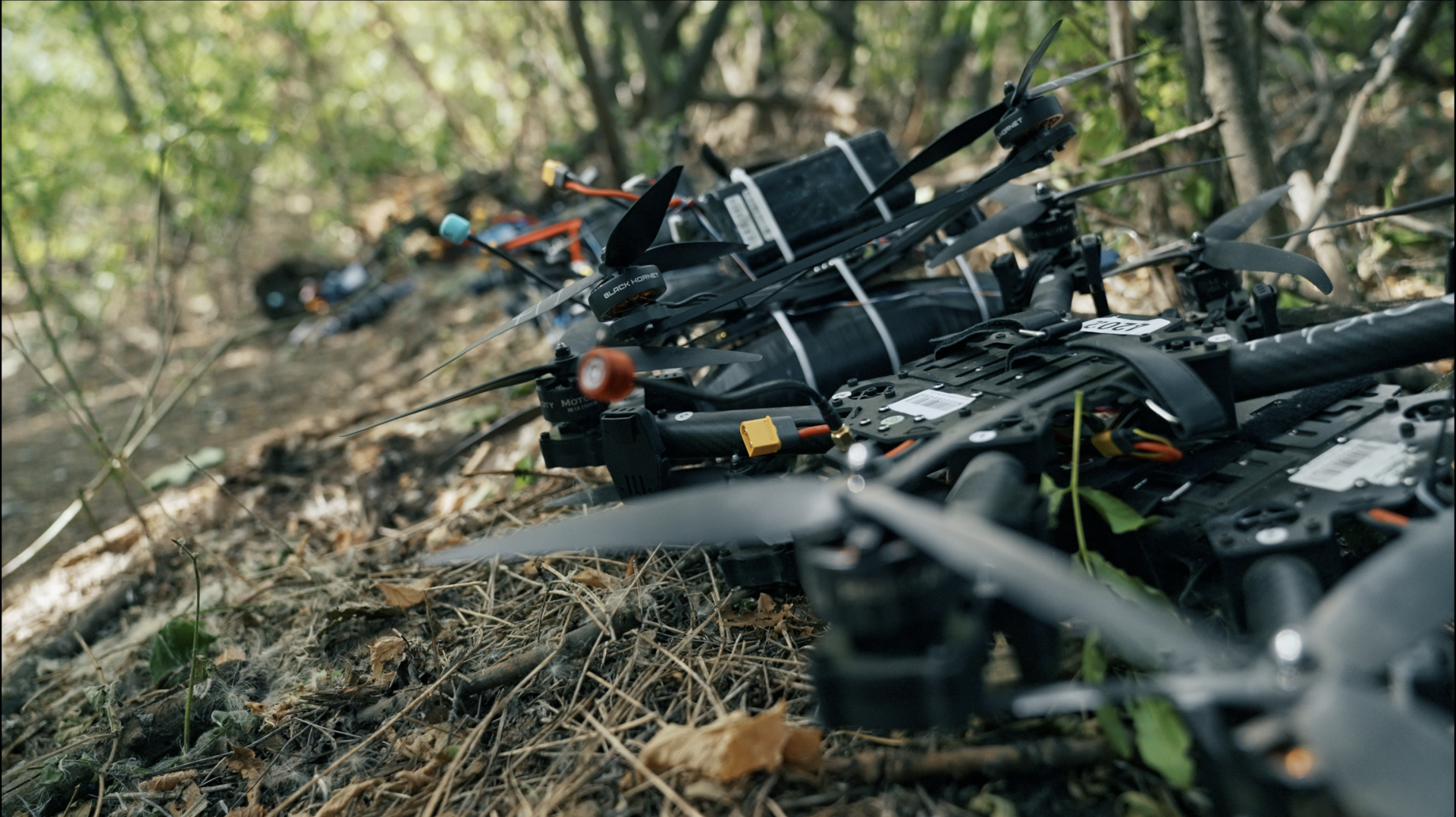
Ukraine constantly pushes the boundaries of technology to try and beat Russia’s heavy war machine. Yet, Russia has the resources to scale up the technology it steals from Ukrainians.
Russian drone operators also copy the circular trajectory of Ukrainian drones to get closer to the soldiers’ position.
“We know where our guys are located, but they’re sly too. They can come in from the side and make a circle,” he says, showing the trajectory in a circular arm gesture. “They’ll make a circle and come in from there. So we’ll think it’s ours—they’re very clever.”
The duel starts at dawn. Russia’s heavy artillery versus nimble Ukrainian drones.
As the sun rises over the flat steppe, we face the Russians. “This is one of the most difficult directions for Ukraine’s defense line,” says “Stary,” with the sun appearing on the horizon behind him. “Unfortunately, all the weight has shifted away from it; everyone has moved to other areas, like Kursk and other directions. Now, there’s not a lot of success, there’s not a lot of people, and I don’t know how long we’ll manage to hold positions in this direction.”
Unfortunately, the Russians have a lot of resources, he says. “Even if you take an infantryman, he’s equipped with Kevlar. As for equipment, they have more ammunition for artillery and more vehicles. And they are pushing through 24/7.”
Russians get so confident that they sometimes try to attack positions with quads or even bikes. These days, they’re scouting for new directions to breach through the defense lines, “Google” says. “There was a lot of Russian equipment when we just got here, way more. We destroyed it all,” he adds with a smirk.
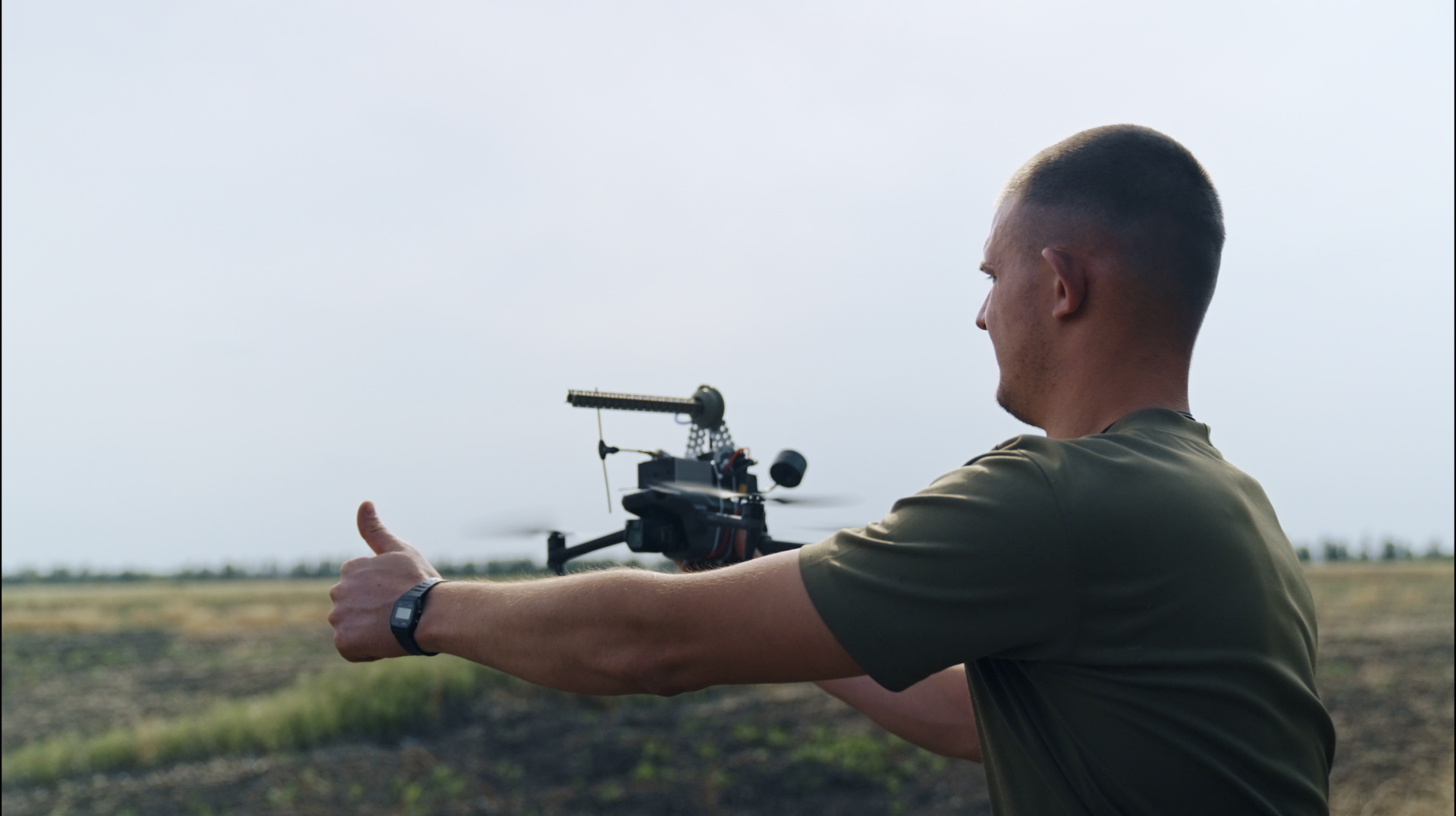
Family business
“Stary” and “Google” are from the Kherson region. They saw Russia’s occupation firsthand.
This war has turned the brothers into brothers-in-arms. “Stary” admits that it’s a family business, much to the discontent of their mother.
“The hardest part was telling my mom. That was the toughest thing,” he says. “Because for quite a while, she didn’t know where we were or what we were doing. We prepped her gradually, and that’s when we told her.”
“It’s easier to work. You can always encourage each other,” adds “Google.”
It’s 6:30 in the morning, and the day is plain. The team is already hard at work. It looks like they may have hit an artillery gun, but we’re still waiting for confirmation.
The protocol is always the same. A livestream shared by all drone units shows Russian positions. “Google” pilots a drone with an antenna to give more leeway to the FPV handled by “Stary.”
Once a target is locked, “Samurai” launches the drone with its lethal charge, and everybody runs into the bunker in case the Russians try to hit the position.
“Stary” and “Google” then take over, bringing the explosive drone to its target. Sometimes they miss… And sometimes they hit.
“Was it hit?” asks “Stary” to another operator on a shared chat. “Yes, the Oural was hit,” a voice answers.
The FPV unit just managed to hit a Russian Oural truck. First, they hit the cabin, another group hit the back, and then the ammo in the truck exploded.
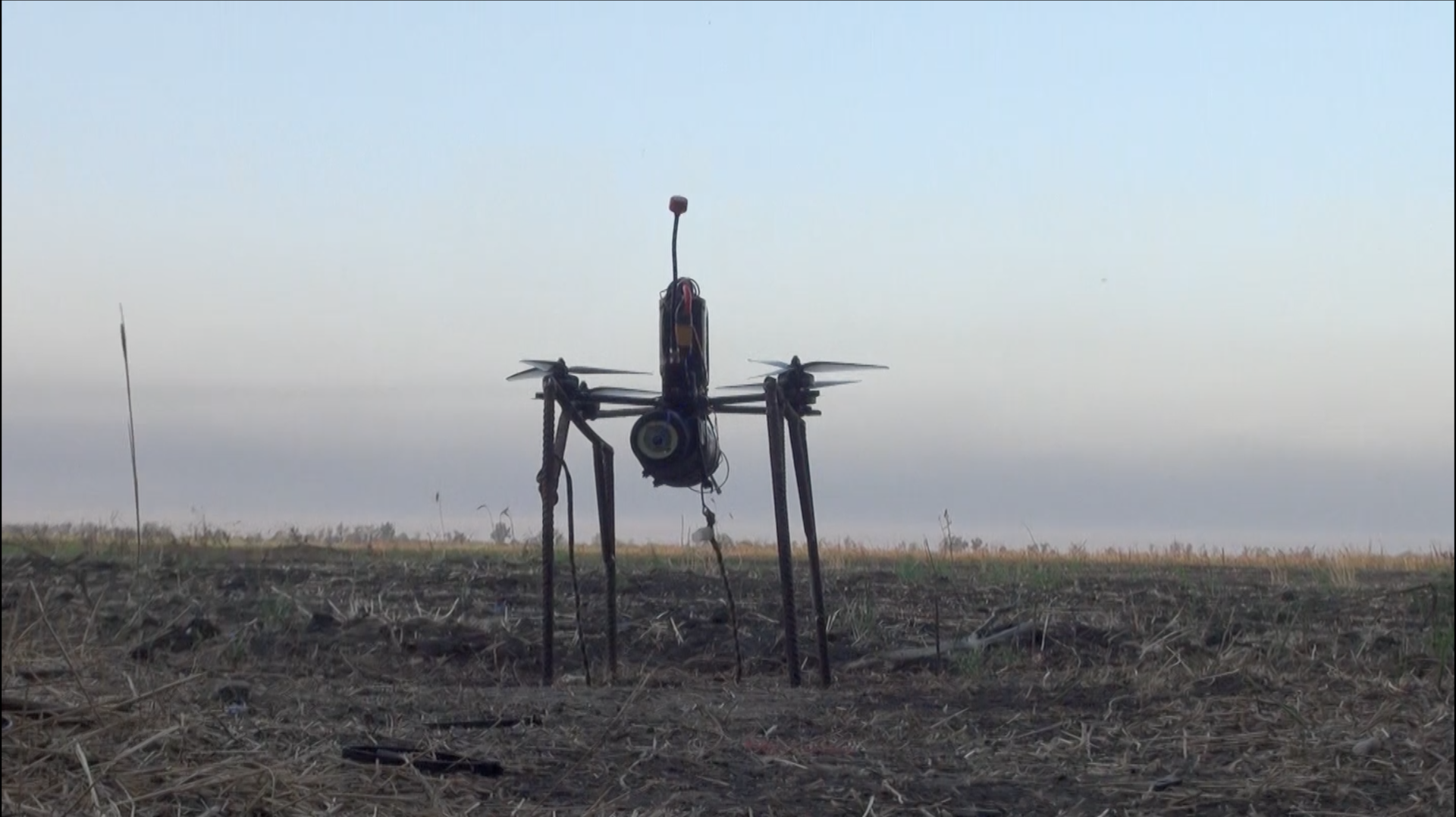
Number one target
Artillery is relentlessly pounding all around us. FPV pilots are Russian troops' favorite targets, “Stary” says.
He says they start with mortars, then open fire with artillery cannons to prevent them from coming out of the dugout. Then come the guns; a couple of tanks appear in the woods and start firing directly.
“After that, they hit you with Grad rockets, followed by an attack from a Su-25 and throws a glide bomb on you,” he says. “You are a priority target, sadly, because we’re causing a lot of damage to the fuckers.”
Paranoia reigns here. Every buzzing sound could mean death from above. Even mosquitos make the soldiers paranoid, they admit.
A Zala drone flies above us. The soldiers tell us it’s okay because there’s enough foliage to protect us from prying eyes. Plus, Russian Zala drones don’t have live streaming, which leaves some time for Ukrainian soldiers to hide. Yet winter will be tough when the positions are exposed, and every tire track is visible in the snow.
The nightfall provides cover for the boys. It’s time to get ready to leave. Still, they’re slightly disappointed with today’s results.
“There wasn’t much today, and we hit a 2S19 and MSTA-S,” says “Stary.” “Unfortunately, it didn’t have much effect.”
As the sun sets, the sounds of artillery grow louder and closer. It’s about time for us to leave the position. We’ll have to drive through the open field while there’s still some daylight, which means the Russians might still spot us.
We’ll need to be extremely careful and drive very fast. We’re back on the road, and only a few minutes away, a position is burning. That could have been us.
After a few hours of rest, the boys will be back tomorrow to hold the line. Because here in Donbas, war never sleeps.

-531fe8d92c87f1630d3f1a2503c33089.png)

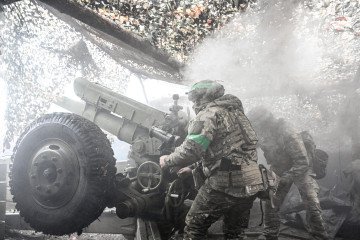
-29a1a43aba23f9bb779a1ac8b98d2121.jpeg)
-886b3bf9b784dd9e80ce2881d3289ad8.png)


-f88628fa403b11af0b72ec7b062ce954.jpeg)